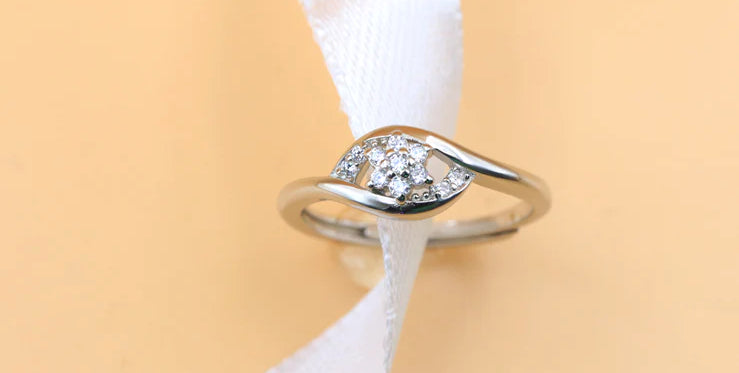Silver vs White Gold: All You Need to Know
Posted by ZARKAN JEWELLERY

Silver and white gold jewellery are two popular metal choices for those looking for a precious metal for their jewellery. While both metals have a similar appearance, they have several differences in terms of their composition, durability, and price.
Silver, also known as sterling silver, is an alloy made of 92.5% silver and 7.5% other metals, typically copper. This mixture provides strength and durability to the metal, making it suitable for jewellery. The bright, shiny appearance of silver makes it a popular choice for jewellery, and it is often used to create intricate designs and patterns.
White gold, on the other hand, is an alloy made of gold and other white metals, such as nickel, palladium, or manganese. The white appearance of white gold comes from a rhodium plating that is applied to the surface of the metal. This rhodium plating can wear off over time, and it will need to be reapplied to maintain the bright white appearance of the metal.
How Silver is better than White Gold
Silver has been a popular choice for jewellery for centuries, and for good reason. While white gold may have gained popularity in recent years, there are several reasons why silver is still the better choice for those looking for a precious metal for their jewellery.
- Affordability- This makes it a more accessible option for those who want to purchase jewellery but don't have the budget for more expensive metals. Additionally, because silver is less expensive, it is also a great option for those who want to buy jewellery for occasional wear.
- Appearance- Silver has a bright, shiny appearance that makes it a popular choice for jewellery. Its bright appearance also makes it a great option for those who want to add a pop of colour to their jewellery collection. Additionally, silver is a more malleable metal than white gold, which makes it easier to create intricate designs and patterns.
- Durability- silver is a much stronger metal than white gold. While it is true that silver is softer than white gold and may be more susceptible to scratches and dings, its strength makes it a great choice for jewellery that will be worn frequently. Additionally, because silver is a more durable metal, it is also a great option for those who are looking for jewellery that will last for many years.
- Sustainability- Another advantage of silver is that it is a naturally occurring metal, which makes it a more sustainable option for those who are concerned about the environment. White gold, on the other hand, is an alloy that is created from a mixture of metals, which can be harmful to the environment during the mining and production process. Additionally, silver is often recycled, which makes it a more environmentally friendly option.
- Maintenance- In terms of caring for your jewellery, silver is much easier to care for than white gold. Silver can be polished regularly to remove any tarnish or discoloration, and it should be stored in a dry place to prevent corrosion. White gold, on the other hand, requires more maintenance. The rhodium plating on white gold may need to be reapplied every few years to maintain the bright white appearance of the metal, and it should be cleaned with a mild soap and water.
In conclusion, silver is a great option for those looking for a precious metal for their jewellery. Its bright appearance, durability, affordability, and sustainability make it a better choice than white gold. Whether you are looking for jewellery for everyday wear or special occasions, silver is a great choice that will last for many years to come.
How White Gold is Better than Silver
White gold is often considered to be a superior option to silver when it comes to jewellery. While silver has been a popular choice for centuries, white gold has several advantages that make it a better choice for those looking for a precious metal for their jewellery.
- Longevity- One of the key advantages of white gold is its appearance. Unlike silver, which can become tarnished over time, white gold maintains its bright, white appearance for many years. This makes it a great choice for those who want their jewellery to look as good as new for many years to come. Additionally, because white gold is an alloy that is created from a mixture of metals, it has a more uniform appearance than silver, which can have a slightly mottled appearance.
- Durability- Another advantage of white gold is its durability. While silver is a soft metal that can be prone to scratches and dings, white gold is a much stronger metal that can withstand more wear and tear. Additionally, because white gold is an alloy, it is more resistant to corrosion and tarnish than silver, which can become discoloured over time.
- Maintenance- In terms of maintenance, white gold is also a better option than silver. White gold should be cleaned with a mild soap and water to maintain its bright white appearance, and the rhodium plating on white gold may need to be reapplied every few years. In comparison, silver requires more frequent cleaning and polishing to remove tarnish and discoloration.

